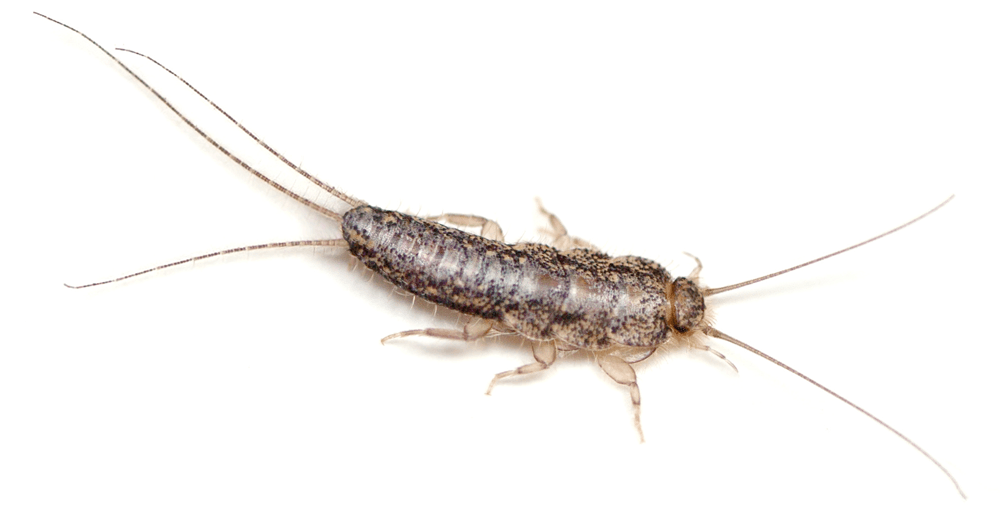Silverfish are very common in households throughout Australia. They are small, soft insects without wings. Their abdomen has three filaments extending from it. Homeowners do not often see silverfish because they are nocturnal. They can run very swiftly and on occasion, they are found in bathtubs seeking food or moisture and then can’t climb out. These insects prefer vegetable matter with a high carbohydrate and protein content. However, indoors, they will feed on almost anything. A partial list includes dried beef, flour, starch, paper, gum, glue, cotton, linen, rayon, silk, sugar, moulds and breakfast cereals, often leaving you to discover holes in your much-loved items.
Because they like to feed on paper material and prefer quiet spaces to nest and feed, they are often transported into homes and businesses inside cardboard boxes or storage containers with paper material. Any business that stores large amounts of paper documents in storage rooms that are usually dark and not disturbed are ideal homes for silverfish.
Silverfish prefer dark, quiet environments, only coming out to search for new food and moisture. They prefer to live in low traffic areas, including roof spaces, storage rooms, wall cavities, and bookcases. Silverfish are marvels of evolution that have been around since shortly after plant life began to flourish worldwide. These insects are the very definition of hardy and have developed resistance to the harshest environmental elements and are fully functional without light or feeding regularly, or for months on end.
Construction practices involving the installation of plasterboard for walls and ceilings, in combination with insulation materials on ceilings, provide seemingly endless food sources for this pest. Adults lay eggs in small groups containing a few to 50 eggs. The eggs are tiny and deposited in cracks and crevices. During a lifespan that can range from two to eight years, a female lays less than 100 eggs typically. If conditions are optimal, the eggs will hatch in two weeks, but in other conditions may take up to two months to hatch.
The young nymphs are very much like the adults except for size. Several years are required before they are sexually mature, and they must mate after each moult if viable eggs are to be produced. Populations do not build up rapidly because of their slow development rate and the small number of eggs laid.
Professional silverfish control includes the use of specialized commercial insecticides. Because of the long life cycle of silverfish, and their ability to go months without feeding, our professional treatments must include regular follow up inspections to ensure that the pests are being controlled and finally eliminated from your home or business. We know the proper way to identify and apply treatments in locations where long-term and eventually, permanent control and exclusion can be accomplished. Call on Auswise Pest Control for more information on how we will help eliminate the silverfish from your property and keep them away for good.

